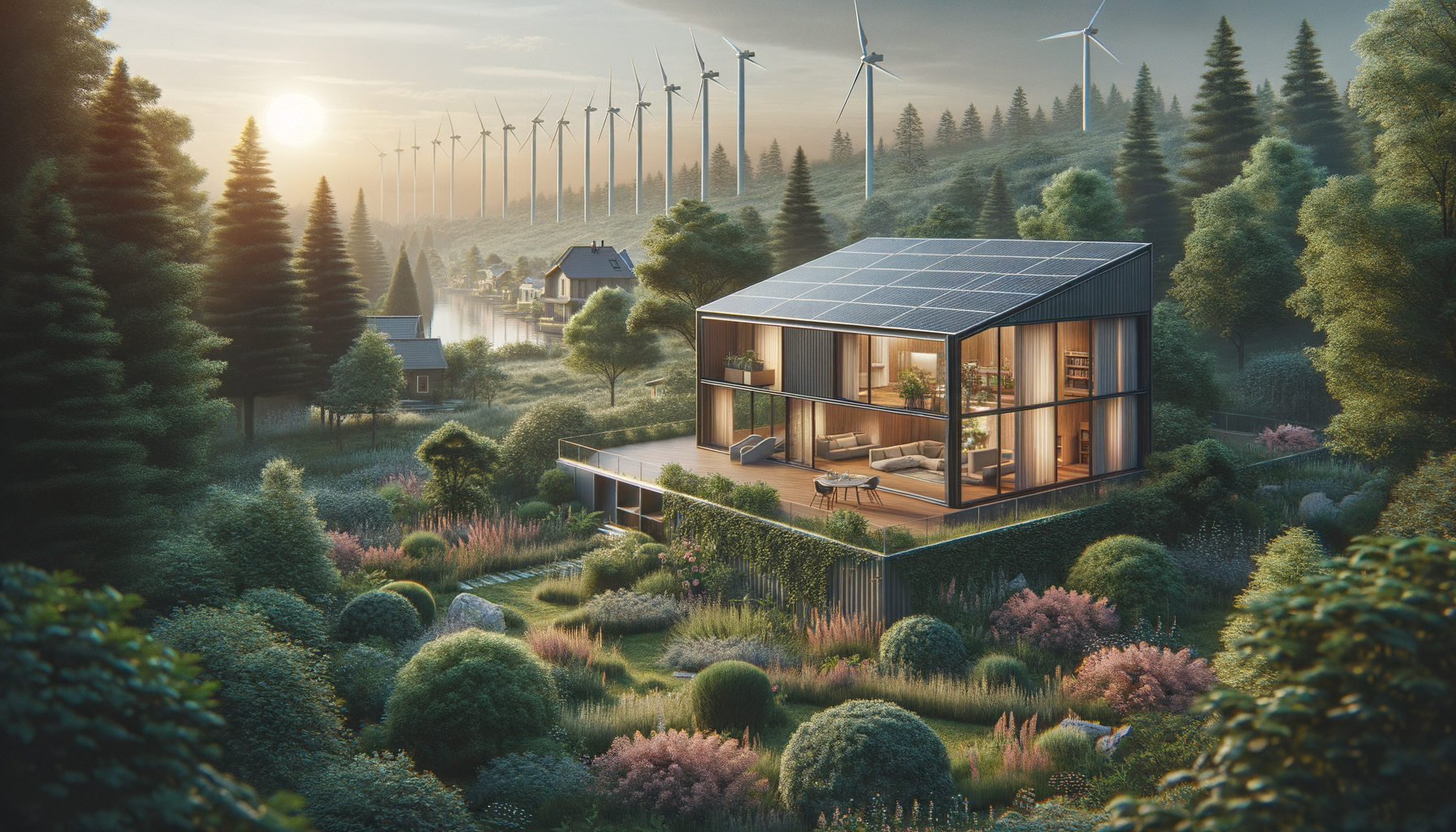
Exploring the World of Prefabricated Homes: Efficiency Meets Modern Living
Introduction to Prefabricated Homes
In recent years, the housing industry has witnessed a remarkable shift towards innovative and sustainable building methods, with prefabricated homes leading the charge. These homes, often referred to as “prefabs,” are constructed off-site in controlled environments before being transported and assembled at their final location. This method not only streamlines the construction process but also offers a blend of efficiency and modern living that appeals to a wide range of homeowners. As urban areas expand and the demand for affordable housing grows, prefabricated homes present a viable solution that aligns with contemporary lifestyle needs.
Prefabricated homes are characterized by their modular design, allowing for customization and adaptability to various landscapes and personal preferences. Their popularity is driven by several factors, including cost-effectiveness, reduced construction time, and minimal environmental impact. In this article, we will delve into the various aspects of prefabricated homes, exploring their benefits, design flexibility, and the technological advancements that make them a compelling choice for modern living.
The Benefits of Prefabricated Homes
Prefabricated homes offer numerous advantages that make them an attractive option for prospective homeowners. One of the most significant benefits is cost efficiency. By manufacturing components in a factory setting, builders can reduce material waste and labor costs, ultimately lowering the overall price for consumers. This controlled environment also ensures higher quality standards, as each module is produced under strict supervision and precision.
Another key advantage is the speed of construction. Traditional home building can take several months, if not years, to complete due to weather delays and on-site challenges. In contrast, prefabricated homes can be constructed in weeks, as the majority of the work is done indoors, shielded from external factors. This rapid assembly not only saves time but also reduces the stress and uncertainty often associated with lengthy construction projects.
Environmental sustainability is another compelling reason to consider prefabricated homes. The factory-based production process minimizes waste and allows for the integration of eco-friendly materials and energy-efficient systems. Many prefabricated homes come equipped with solar panels, advanced insulation, and energy-efficient appliances, reducing the carbon footprint and promoting a sustainable lifestyle.
Design Flexibility and Customization
One of the most appealing aspects of prefabricated homes is their design flexibility. Unlike traditional homes, which can be limited by on-site construction constraints, prefabricated homes offer a wide range of customization options. Homeowners can choose from various layouts, finishes, and features to create a living space that reflects their personal style and needs.
Modular design allows for easy expansion and adaptation, making it possible to add rooms or modify existing spaces as family needs change. This adaptability is particularly beneficial for growing families or those who anticipate future changes in their living arrangements. Additionally, prefabricated homes can be designed to fit diverse landscapes, from urban settings to rural retreats, ensuring that homeowners can enjoy their ideal location without compromising on design.
Architects and designers are increasingly embracing prefabricated homes as a canvas for innovation, experimenting with unique shapes, materials, and technologies. This creativity results in homes that are not only functional but also aesthetically pleasing, challenging the traditional perceptions of prefabricated housing.
Technological Advancements in Prefabricated Homes
The evolution of prefabricated homes is closely tied to advancements in technology. Modern prefabs are equipped with smart home systems that enhance convenience and efficiency. From automated lighting and climate control to security systems and entertainment setups, technology plays a pivotal role in elevating the living experience within these homes.
Building Information Modeling (BIM) is another technological advancement that has revolutionized the prefabricated housing industry. BIM allows architects and builders to create detailed 3D models of homes before construction begins, enabling precise planning and minimizing errors. This technology ensures that each component fits perfectly, reducing the need for adjustments during assembly and ensuring a seamless construction process.
Additionally, advancements in materials science have led to the development of innovative building materials that enhance the durability and energy efficiency of prefabricated homes. From high-performance insulation to sustainable building materials, these innovations contribute to the overall quality and sustainability of prefabricated housing.
Conclusion: The Future of Prefabricated Homes
As the demand for efficient, affordable, and sustainable housing continues to rise, prefabricated homes are poised to play a significant role in shaping the future of the housing industry. Their ability to combine modern design with practical benefits makes them an attractive option for a diverse range of homeowners.
The flexibility and customization options offered by prefabricated homes ensure that they can meet the evolving needs of families and individuals, while technological advancements continue to enhance their appeal. As more people recognize the value of prefabricated homes, it is likely that their popularity will continue to grow, paving the way for innovative and sustainable living solutions.
In conclusion, prefabricated homes represent a harmonious blend of efficiency and modern living, offering a glimpse into the future of residential architecture. Whether you are a first-time homebuyer or looking to downsize, exploring the world of prefabricated homes could be the key to finding a home that meets your needs and aligns with your values.